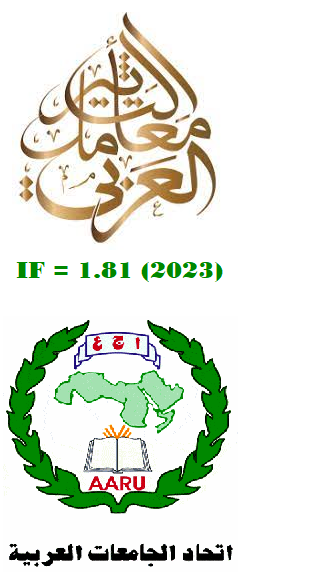The Representation of Gender Identity in the Persian Translations of “Pride and Prejudice”
Abstract
This paper investigated how the gender identity of the female protagonist in the English novel Pride and Prejudice (Austen, 1813) and its two Persian translations was represented under the influence of the dominant ideology in Iran`s pre-and post- Islamic Revolution eras. In so doing, Baker`s analytical model (2006) was applied by which the ST and the TTs were analyzed at micro-and macro-levels. In this regard, the configurations of features of narrativity in all versions (i.e., both ST and TTs), and the influence of Iran`s ruling systems on these configurations were investigated. As a result, it was revealed that the representation of the protagonist`s gender identity was SL oriented in the pre-Islamic Revolution translation, and it was TL oriented in the post-Islamic Revolution translation. These findings affirmed Baker`s claim that a translation as a different version of a foreign narrative disseminates the favorite social reality in the TL society.
Downloads
References
Akbari, L. (2007). The Role of Gender in Translation of the Holy Quran. Tehran: MA Thesis, ATU.
Amini, A. (2002). Political and Social Changes of Iran in the Era of Pahlavi. Tehran: Sedaay-e Moaser.
Austen, J. (1813). Pride and Prejudice. United Kingdom: The Random House.
Baker, M. (2006), Translation and Conflict. Manchester: Routledge.
Bassnett, S., & Lefevere, A. (1990). Translation, History and Culture. New York: Pinter.
Bennett, W.L., & Edelman, M. (1985). Toward a new political narrative. Journal of Communication, 35, 156-171.
Bruner, J. (1991). The narrative construction of reality. Critical Inquiry, 18, 1-21.
Butler, J. (1990). Gender Trouble, Feminisms and the Subversion of Identity. New York: Routledge.
Chamberlain, L. (1998). Gender metaphorics in translation. In: Backer, M., editor. Encyclopedia of Translation Studies. London: Routledge. p93-96.
Digard, J.P., & Hourcade, B. (1996). In: Mahdavi, A.A., editors. Iran in the Twentieth Century. Tehran: Nashr-e Alborz.
Fisher, W.R. (1997). Narration, reason, and community. In: Hinchman, L.P., & Hinchman, S.K., editors. Memory, Identity, Community: The Idea of Narrative in the Human Sciences. Albany: State University of New York Press. p307-27.
Flotow, L.V. (2001). Gender in Translation: The Issues go on. Available from: https://www.accademia.edu/2868174/Gender_in_Translaion_the_Issues_go_on. [Last accessed on 2021 Jul 07].
Flotow, L.V., & Farzaneh, F. (2017). Translating Women: Different Voices and New Horizons. New York: Routledge.
Ghoraishi, M.H. (2014). The History of Translation. Tehran: Naghsh o Negar.
Karimi-Hakkak, A. (1998). Persian tradition. In: Baker, M., editors. Routledge Encyclopedia of Translation Studies. London: Routledge. p513-22.
Kuhiwczak, P., & Littau, K., editors. (2007). Gender and translation. In: Companion to Translation Studies. Great Britain: Cromwell Press Ltd. p92-105.
Mehrizi, M. (2006). Gender and translation of Quran. Bayyenat, 49, 33-41
Mosaheb, S.M. (1967). “Khorur va Taeassob” [Pride and Prejudice]. Tehran: Bongah-e Tarjome va Nashr-e Ketab.
Parker, B.A. (2004). Sexual Identity Development and Dynamic Systems Theory: A Narrative Analysis. Georgia: PhD Dissertation, The University of Georgia.
Polkinghorne, D.E. (1995). Narrative configuration in qualitative analysis. In: Hatch, J.A., & Wisniewski, R., editors. Life History and Narrative. Washington DC: The Falmer Press. p5-23.
Rezayi, R. (2017). “Khorur va Taeassob” [Pride and Prejudice]. Tehran: Nashr-e Ney.
Rubin, M. (2012) Group status is related to group prototypicality in the absence of social identity concerns. Social Psychology, 152(3), 386-389.
Schwandt, T.A. (2001). Dictionary of Qualitative Inquiry. Thousand Oaks, CA: Sage.
Shahsavandi, S. (2004). Grammatical gender in translation and interpretaion of Quran. Bayyenat, 42(2), 80-86.
Simon, S. (1996). Gender in Translation: Cultural Identity and the Politics of Transmission. London, New York: Routledge.
Somers, M. (1994). The narrative construction of identity: A relational and network approach. Theory and Society, 23(5), 605-649.
Valadkhni, H. (2007). The Translator’s Gender and its Impact on Translation of Gender Marked Dialogues in Narrative Discourses. MA Thesis, ATU.
Copyright (c) 2022 Sirvan A. Aminzadeh

This work is licensed under a Creative Commons Attribution-NonCommercial-NoDerivatives 4.0 International License.
Authors who publish with this journal agree to the following terms:
1. Authors retain copyright and grant the journal right of first publication with the work simultaneously licensed under a Creative Commons Attribution License [CC BY-NC-ND 4.0] that allows others to share the work with an acknowledgment of the work's authorship and initial publication in this journal.
2. Authors are able to enter into separate, additional contractual arrangements for the non-exclusive distribution of the journal's published version of the work (e.g., post it to an institutional repository or publish it in a book), with an acknowledgment of its initial publication in this journal.
3. Authors are permitted and encouraged to post their work online (e.g., in institutional repositories or on their website) prior to and during the submission process, as it can lead to productive exchanges, as well as earlier and greater citation of published work (See The Effect of Open Access).









